Artist Profile: Aaron Douglas
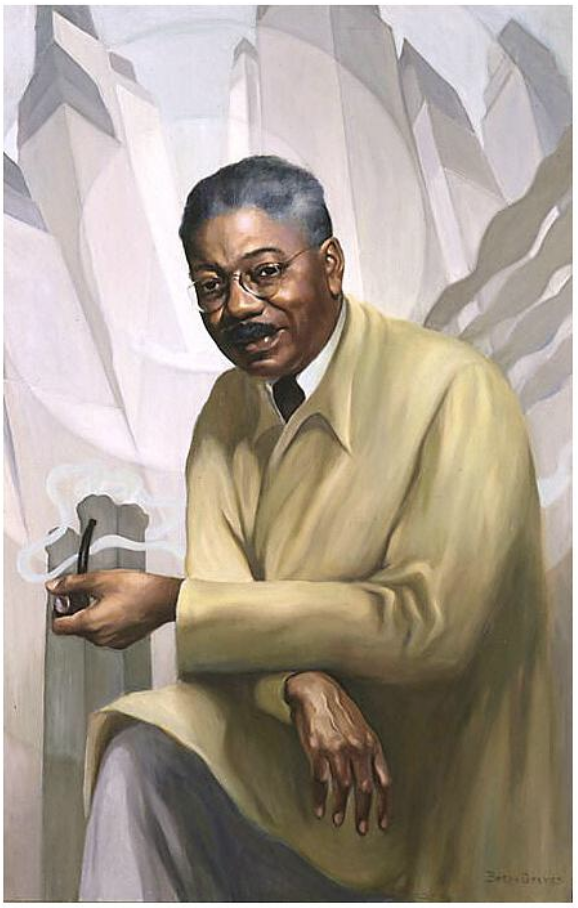
Courtesy of the National Portrait Gallery.
New York was waiting for Aaron Douglas, though no one knew just how much, including the artist himself. By the time he arrived in 1925 he had no idea what was waiting, not the lifetime of work, and certainly not the eventual reputation as the Harlem Renaissance’s father of African-American art.
“…Just a son of Africa, and paint for what inspires me.”
Aaron Douglas
Aaron Douglas & His Circle
Douglas, with the urging of German-born Art Deco artist Winold Reiss and writers Alain Locke and W. E. B. DuBois, was encouraged to study African art. Studying cubism and Egyptian art, he blended them with Art Deco and modern design to help create a uniquely African-American aesthetic. His flat silhouettes and muted colors appealed: soon his work was everywhere. Douglas’s paintings were reproduced in books, such as Locke’s ground-breaking The New Negro, 1925; James Weldon Johnson’s God’s Trombones, 1927; and Langston Hughes’s Fine Clothes to the Jew, 1927. The magazines Opportunity and Crisis both commissioned him as a graphic artist, and Crisis editor DuBois hired him.
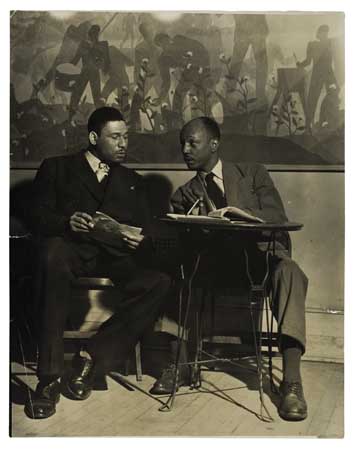
One of Douglas’s major contributions to American art was as a muralist. In 1930, as the leading artist of the Harlem Renaissance, he received an important commission to create a large group of murals for the Cravath Memorial Library at Fisk University, a historically black institution, that narrated a history of African-American life. In 1934 he completed Aspects of Negro Life, a series of four panels created under the auspices of the WPA for the 135th Street Library (which eventually became The Schomburg).
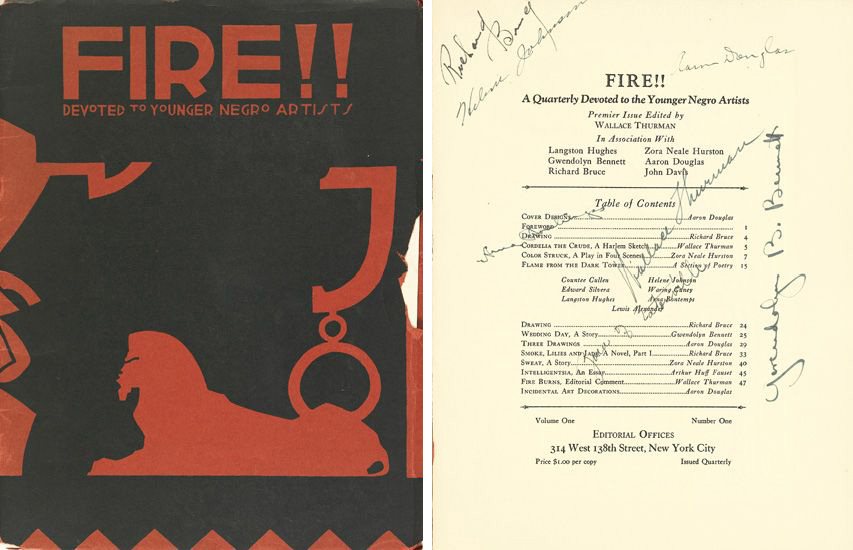
In 1926, he would join novelist Wallace Thurman, Langston Hughes, Zora Neale Hurston and several others on a magazine called Fire!! Devoted to Younger Negro Artists. The magazine, however, only lasted for one issue.
That same year he married Alta Sawyer. She was an educator as well as an artist, and they made their home a regular salon-like setting for giants such as DuBois, Hughes and others.
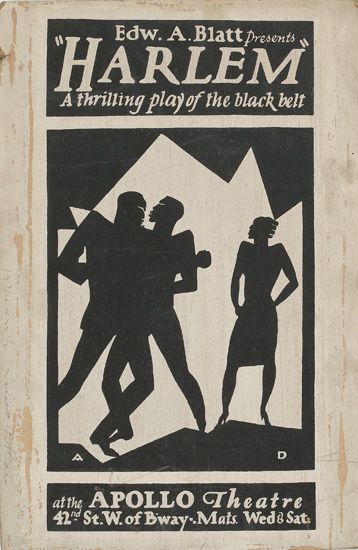
He traveled to Paris in 1931, where he studied for a year. When he first arrived in New York, his plan was for it to be just a stop on the way to Paris, the natural place for an artist, he thought. But the Harlem Renaissance had different plans for him. After returning to New York, he helped found the Harlem Artist’s Guild and led it in negotiations with the Works Progress Administration (WPA) to win contracts for African-American artists.
Early Life
He was born to Aaron Douglas and Elizabeth on May 26, 1899, in Topeka, Kansas. The senior Douglas was a Tennessean-born baker, and his mother was an amateur painter from Alabama. Her work inspired the young Douglas to explore painting himself.
In 1917, he graduated from Topeka High School. His family was large and while his parents supported him going to college, they couldn’t finance it. He moved to Detroit and worked briefly at an auto plant. Eventually he was able to attend the University of Nebraska and worked, among other jobs, as a waiter. He graduated college in 1922 and moved to Kansas City, Missouri, where he taught at Lincoln High School for two years. Soon, however, he was heading east.
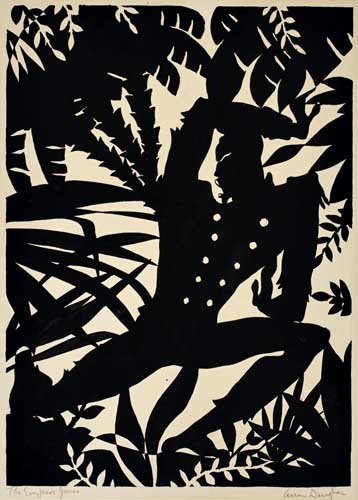
Ultimately, he continued to pursue his own education, too. In 1938 he won a fellowship that funded a painting trip to Haiti. By 1939, Charles S. Johnson, President of Fisk University, invited Douglas to help build the art department there. He taught at Fisk for 30 years. And in 1941 he enrolled in Columbia University’s teacher college, where he earned a master’s degree in art education. Douglas became a full professor in 1944—the same year he painted another significant mural at Fisk, Building More Stately Mansions. Douglas received countless accolades during his career, including an invitation to the White House for the centennial of the Emancipation Proclamation. His honorifics also included an honorary degree from Fisk.
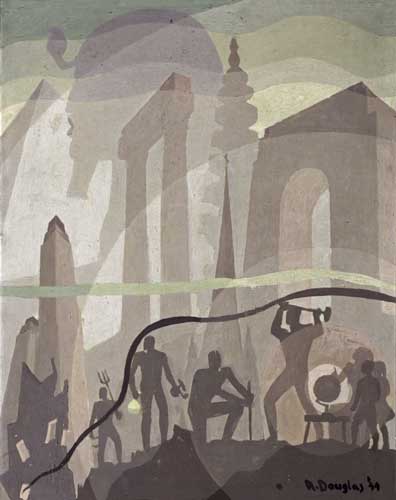
Alta died in 1958. Aaron Douglas lived until the age of 79 and died on February 2, 1979. He would say that he was not so much the father of African-American art—he was, he said, “just a son of Africa, and paint for what inspires me.”
For more work by African-American artists, browse the catalogue for our Fall 2019 sale of African-American Fine Art.
Sign up for Auction Updates to get email notifications about new catalogues, or download our Live Bidding App and enable push alerts.
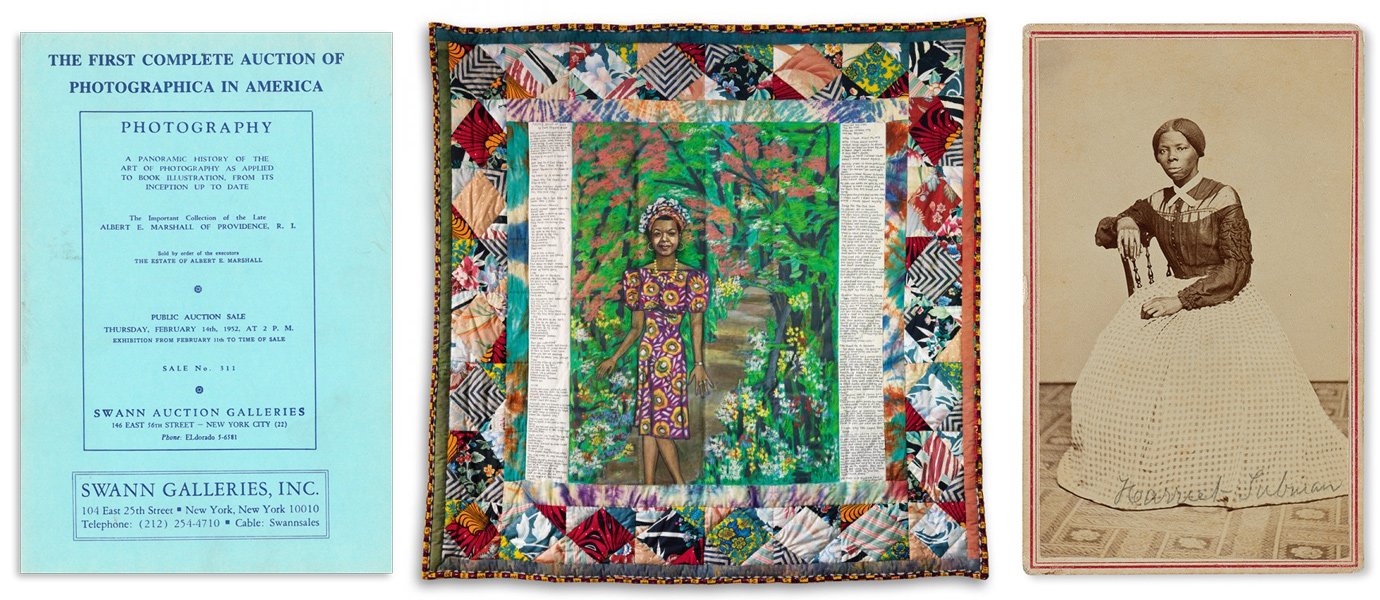
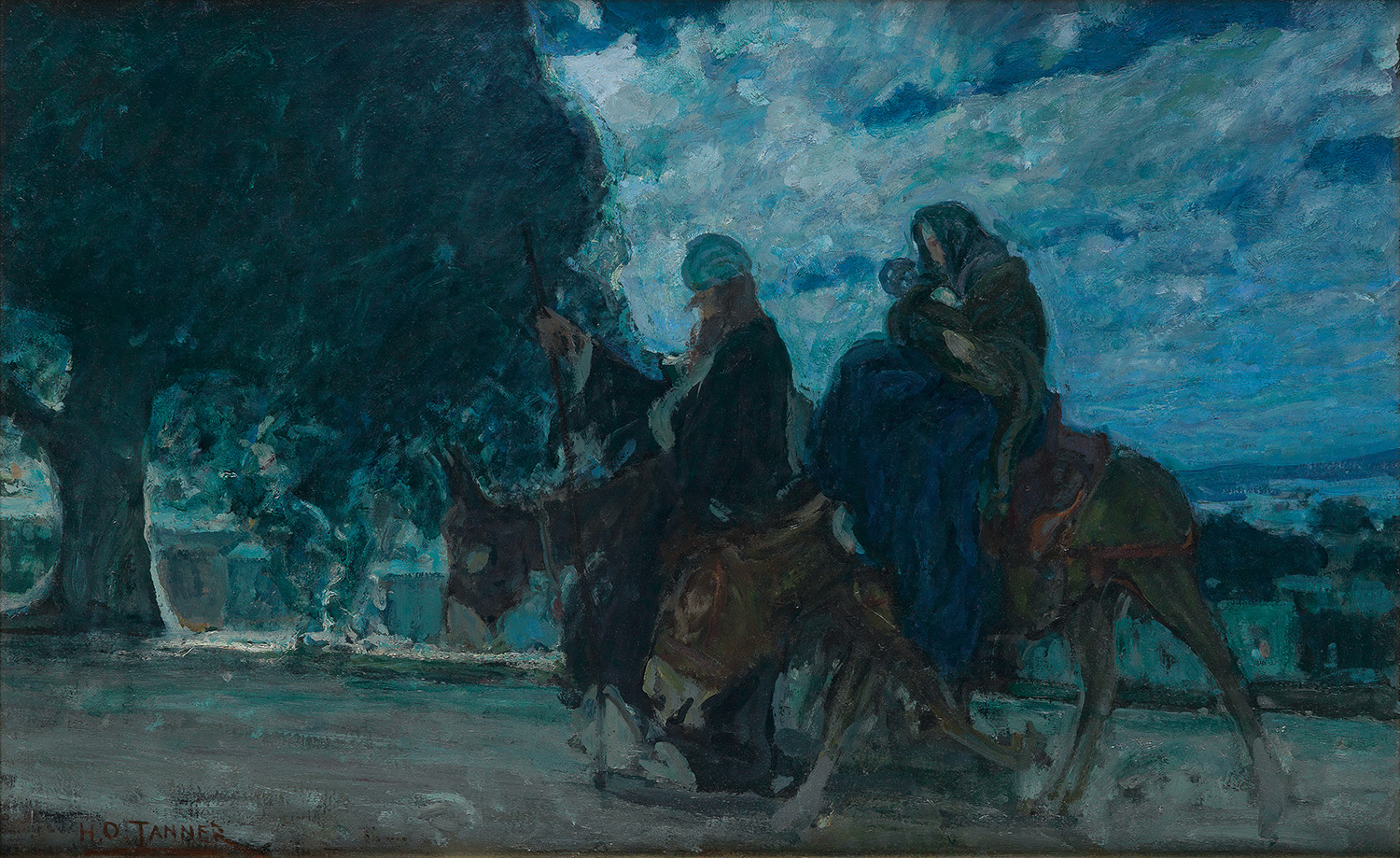








![Grace Meschery-McCormack shares about two copies of Fernando de Rojas’s ‘La Célestine,’ including a limited edition copy illustrated by Pablo Picasso.
At auction April 22. Learn more about the works at the link in our bio.
#Rarebooks #rarebookdealer #antiquarianbooks #auctions
_______________________________________
Music Credit:
Schubert - Piano Quintet in A major ‘The Trout’, D. 667 - IV. Andantino – Allegretto
Music provided by Classical Music Copyright Free on Youtube [https://tinyurl.com/visit-cmcf]
Watch: • Schubert - Piano Quintet in A major ‘...]](https://scontent-iad3-1.cdninstagram.com/v/t51.75761-15/491443494_18499096345036585_5935932878956098058_n.jpg?stp=dst-jpg_e35_tt6&_nc_cat=107&ccb=1-7&_nc_sid=18de74&_nc_ohc=AZ-awqelOZgQ7kNvwFA19hE&_nc_oc=AdkZVODYB5VxTPck7kaEV8QTzHwvQLzaAjo_r9W39mgpTAk2Ix_Bp7bj2bTOpAdxWZY&_nc_zt=23&_nc_ht=scontent-iad3-1.cdninstagram.com&edm=AM6HXa8EAAAA&_nc_gid=RjO-AL8wJB4OsYpWPreXeg&oh=00_AfFe71cdy3TwSfMQhSbjRwO5nQS1iO9djdj-EPTpnGtE0g&oe=680E6091)







